Have you ever wondered if the grass is greener on the other side? Maybe you’ve had one too many clients tell you “you don’t care”. Perhaps you’ve started a family and you’re wondering if there are jobs around with less after-hours? Or maybe you’ve always been interested in the less traditional fields of veterinary medicine – fascinated by parasites, proficient at a post-mortem or passionate about community education. Whatever your reason for being ‘non-traditional field’ curious, it’s worth remembering that there is more to being a vet than being a clinician.
The range of non-traditional roles available are diverse, with 27% of respondents to the 2016 AVA Workforce Survey indicating they work outside clinical practice. These respondents worked across government, laboratories, universities, industry and ‘other’. So, have you ever wondered about the greenness of that grass? Do vets that move into non-traditional roles regret it?
We spoke with a recent graduate that made the move from clinician to government vet about her experience.
Dr Andrea Preusche
Dr Preusche graduated in 2013 from James Cook University in Queensland. She moved from small animal practice to the federal Department of Agriculture and Water Resources. Here we discuss what it was like to make the ‘switch’.
What were you doing before you became a government vet?
Before becoming a Veterinary Officer for the Department of Agriculture and Water Resources I was a full-time associate with the RSPCA Burwood East in Victoria for two years post-graduation from James Cook University, Townsville.
My day-to-day there was significantly different from today with the usual clinical consults, surgery, as well as welfare work.
What made you apply for a non- clinical position? What attracted you to the work?
To be honest I had never considered non-clinical work, however, I found that after two years in a clinical setting I was becoming disheartened with the veterinary profession; the stress, expected unpaid overtime, low wages, compounded by compassion fatigue. I was ready for something different but didn't know where to start.
Looking at the reasons why I got into veterinary medicine in the first place, I wanted to effect positive change, not only for individual animals but also for the people who care for them or whose livelihoods depend on them. A good friend already working for the government highlighted that working as a veterinarian for the federal government meant that
I could achieve this goal across a much larger scale.
I looked into the Department of Agriculture and Water Resources and I was attracted to the variety of roles offered for veterinarians, and that it would allow me to be part of the team protecting, supporting, developing and maintaining Australia’s animals, environment, stakeholders and economy. Of course, an added bonus being it would provide a much-needed work-life balance.
How did you feel leaving clinical practice?
Conflicted. I had never considered non- clinical work. The impression I had of the profession was that you trained to practice and that moving away from that was in some way giving up on the profession, so needless to say there was some guilt associated with moving on. And nervous, I had no idea what the day-to-day would be like and if I would even be happy at a desk job.
Having said this, however, I adamantly believe two and a half years later that this is hands down the best decision I have ever made. I have never been happier both professionally and personally as now working for the Department.
What do you enjoy about your current role?
There is so much I could put here but the two big ones would be the most definitely the people and the variety. The teams I have worked with have all been very supportive and provide you with both training and the support needed to really develop into the role.
Regarding variety, in my two and a half years working for the Department I have been involved in numerous interesting activities such as hosting international government delegations to highlight Australia's unique biosecurity status and facilitate market access (trade), been involved in work on antimicrobial resistance (AMR) and usage, zoonotic/ communicable diseases, emergency animal diseases, emerging infectious diseases and other public health biosecurity risks.
In my current role, I specifically manage technical market access negotiations on live ruminant and ruminant germplasm exports to deliver new or improved market access, liaise with industry bodies to prioritise and inform the above negotiations, analyse overseas government agricultural policy as applied to trade of ruminants and ruminant genetic material and provide briefs and policy advice on any of the above subjects.
Do you miss any aspects of clinical practice?
Cat consults, I will always be a crazy cat lady at heart!
